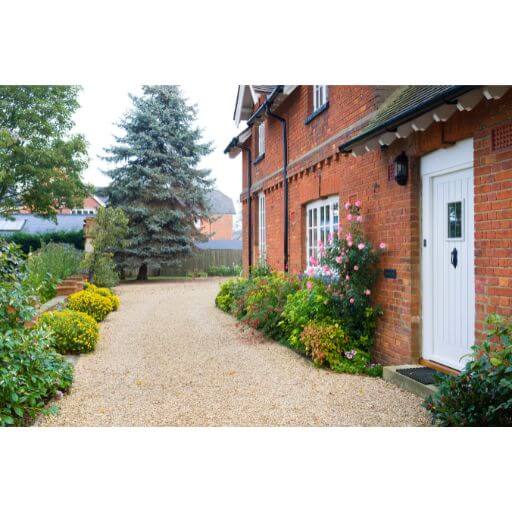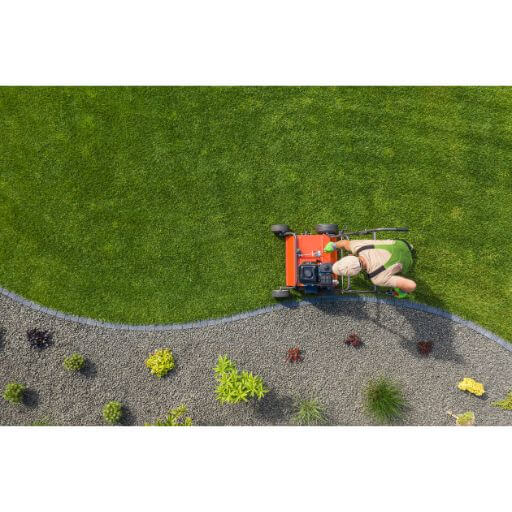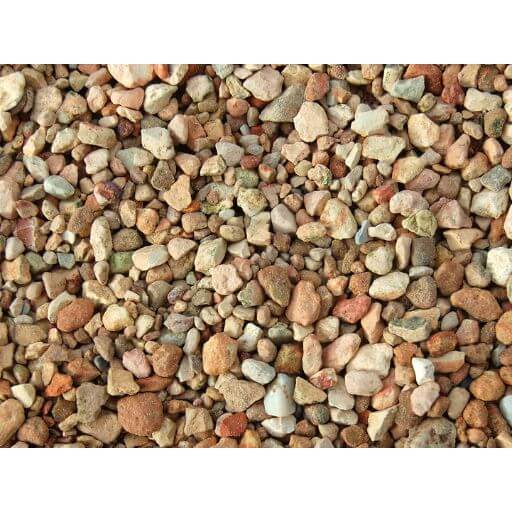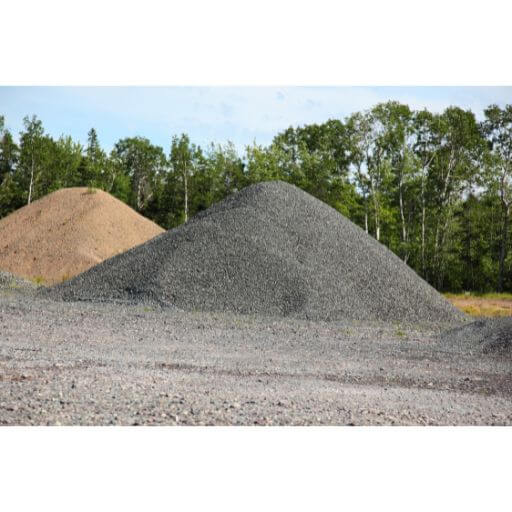
In the world of landscaping and interior design, the term “decorative aggregate” is a familiar one, but what exactly does it mean? At its core, a decorative aggregate refers to small particles of various materials that are used to enhance the aesthetic appeal of surfaces. From crushed rocks to colorful pebbles, these aggregates come in a variety of shapes and sizes to create stunning visual effects that can transform any space into a work of art. Whether you’re looking to add a touch of elegance to your garden or create a unique flooring design in your home, understanding the world of decorative aggregates can open up a world of creative possibilities. A decorative aggregate is a type of material that is used to enhance the visual appeal and aesthetics of various surfaces and areas. It is commonly used in landscaping, pathways, driveways, flooring, countertops, water features, and garden borders. Decorative aggregates come in various types, such as natural stone aggregates, glass aggregates, metal aggregates, colored aggregates, and recycled aggregates. Each type offers unique characteristics and benefits, making them suitable for different applications. Using decorative aggregates can not only enhance the overall appearance of a space but also add durability, flexibility, and sustainability.
Types of Decorative Aggregates
1. Natural Stone Aggregates
Natural stone aggregates are extracted from quarries and come in a wide variety of types, including granite, limestone, marble, slate, and sandstone. These aggregates are prized for their natural beauty and durability. Natural stone aggregates can be used to create stunning landscaping features, pathways, driveways, and flooring. They can also be shaped into various sizes and shapes, allowing for flexibility in design.
2. Glass Aggregates
Glass aggregates are made from recycled glass, which is crushed into small pieces. These aggregates come in an array of vibrant colors, adding a unique and contemporary touch to any application. Glass aggregates are often used in landscaping, water features, and countertops. They are also eco-friendly, as they reuse materials that would otherwise end up in landfills.
3. Metal Aggregates
Metal aggregates, such as stainless steel or aluminum, are a popular choice for creating a modern and industrial look. These aggregates can be used in flooring, countertops, and water features. Metal aggregates offer a sleek and shiny appearance, adding a touch of sophistication to any space. They are also highly durable and resistant to corrosion, making them suitable for both indoor and outdoor applications.
4. Colored Aggregates
Colored aggregates are aggregates that have been dyed or pigmented to achieve a specific color. These aggregates are available in a wide range of hues, allowing for endless design possibilities. Colored aggregates are commonly used in landscaping, pathways, driveways, flooring, and countertops. They can be mixed and matched to create stunning patterns and focal points.
5. Recycled Aggregates
Recycled aggregates are made from various materials, including crushed concrete, crushed asphalt, and crushed brick. These aggregates are environmentally friendly, as they reduce the demand for virgin materials. Recycled aggregates can be used in landscaping, pathways, driveways, and flooring. They offer a cost-effective and sustainable alternative to traditional aggregates.
Applications
1. Landscaping
Decorative aggregates are widely used in landscaping to enhance the overall appearance of outdoor spaces. They can be used to create beautiful garden beds, borders, and walkways. Whether it’s natural stone aggregates, colored aggregates, or glass aggregates, there are options to suit any landscaping style or theme. Decorative aggregates can be used to create focal points, add texture, or define different areas within a garden or landscape design.
2. Pathways and Driveways
Decorative aggregates are a popular choice for creating aesthetically pleasing and durable pathways and driveways. Natural stone aggregates, such as gravel or pebbles, can be used to create a rustic and natural look. Colored aggregates or glass aggregates offer a more contemporary and vibrant option. Decorative aggregates not only improve the visual appeal of pathways and driveways but also provide stability and prevent erosion.

3. Flooring and Countertops
Decorative aggregates can be used to create stunning and unique flooring and countertops. Natural stone aggregates, such as marble or granite, offer a luxurious and elegant option for both indoor and outdoor spaces. Glass aggregates add a modern and colorful touch to countertops and flooring. Metal aggregates, such as stainless steel or aluminum, offer a sleek and industrial look. Colored aggregates provide endless possibilities for creating patterns and designs.
4. Water Features
Decorative aggregates are commonly used in water features, such as fountains, ponds, and waterfalls. They can be used to line the bottom or sides of water features, creating a beautiful and natural look. Natural stone aggregates, in particular, are often used in water features to create a serene and tranquil environment. Glass aggregates can also be used to add a pop of color and create a visually stunning water feature.
5. Garden Borders
Decorative aggregates are an excellent choice for creating garden borders and edging. They can be used to define different sections of a garden or highlight specific plants or areas. Natural stone aggregates, colored aggregates, and glass aggregates can all be used to create unique and visually appealing garden borders. Decorative aggregates not only enhance the aesthetics of a garden but also help to contain soil and prevent erosion.

Benefits of Decorative Aggregates
1. Aesthetics and Visual Appeal
One of the primary benefits of decorative aggregates is their ability to enhance the visual appeal of any space. Whether it’s a garden, pathway, driveway, or countertop, decorative aggregates can add texture, color, and personality. With a wide range of options available, you can choose aggregates that complement your desired style, whether it’s natural, contemporary, or industrial. Decorative aggregates allow you to create a unique and visually stunning environment.
2. Durability and Longevity
Decorative aggregates are known for their durability and longevity. Natural stone aggregates, in particular, are highly durable and can withstand various weather conditions. Whether it’s rain, snow, or sunlight, decorative aggregates can maintain their integrity and beauty over time. This makes them an excellent choice for outdoor applications such as landscaping, pathways, and driveways. With proper installation and maintenance, decorative aggregates can last for many years.
3. Low Maintenance
Another benefit of decorative aggregates is their low maintenance requirements. Unlike traditional materials, such as wood or concrete, decorative aggregates do not require frequent sealing, staining, or painting. They are resistant to stains, fading, and wear, making them easy to clean and maintain. Decorative aggregates can simply be cleaned with water and mild detergent to remove any dirt or debris. This low-maintenance characteristic makes them a convenient choice for busy homeowners or commercial properties.
4. Versatility and Flexibility
Decorative aggregates offer a great deal of versatility and flexibility in design. They can be used in various applications, ranging from landscaping to countertops. Whether you’re looking for a natural, modern, or colorful look, decorative aggregates have options to suit your needs. They can be mixed and matched, combined with other materials, and shaped into different sizes and shapes. This versatility allows for endless design possibilities and creativity.
5. Sustainable and Environmentally Friendly
Many types of decorative aggregates, such as glass aggregates and recycled aggregates, are considered sustainable and environmentally friendly. Glass aggregates use recycled glass, helping to reduce waste and preserve natural resources. Recycled aggregates use materials that would otherwise end up in landfills, reducing the demand for virgin materials. By choosing decorative aggregates, you can contribute to a more sustainable and eco-friendly environment.
Factors to Consider When Choosing Decorative Aggregates
1. Budget
Before choosing decorative aggregates, it’s important to consider your budget. Different types of aggregates vary in price, so it’s essential to determine how much you’re willing to spend. It’s also important to consider the overall cost, including installation and maintenance. While some aggregates may have a higher initial cost, they may require less maintenance, resulting in cost savings in the long run. Consider your budget and choose decorative aggregates that offer the best value for your money.
2. Color and Texture
The color and texture of decorative aggregates play a significant role in the overall aesthetics of a space. Consider the existing color scheme and style of the area where the aggregates will be used. Choose aggregates that complement or contrast with the surrounding elements. Additionally, consider the desired texture, whether you want a smooth, polished look or a more rough and natural appearance. Take the time to explore different color and texture options to find the perfect match for your project.

3. Size and Shape
The size and shape of decorative aggregates can greatly impact the overall design and functionality. Larger aggregates, such as boulders or pebbles, can create a bold and dramatic effect, while smaller aggregates offer a more subtle and intricate look. Consider the scale of the area where the aggregates will be used and choose sizes and shapes accordingly. You may also consider mixing different sizes and shapes to add visual interest and depth.
4. Compatibility with the Surroundings
It’s important to consider the compatibility of decorative aggregates with the surrounding elements. Whether it’s plants, trees, or existing structures, choose aggregates that harmonize with the environment. Natural stone aggregates, for example, can seamlessly blend with nature, while glass aggregates can provide a modern contrast. Consider how the aggregates will interact with the existing elements to create a cohesive and visually pleasing design.
5. Functional Requirements
When choosing decorative aggregates, it’s important to consider the functional requirements of the space. Will the aggregates be used in an area with heavy foot traffic or vehicles? If so, it’s crucial to choose aggregates that are durable and can withstand the specific usage requirements. Consider the potential wear and tear, as well as the maintenance involved in maintaining the aggregates’ functionality. It’s important to strike a balance between aesthetics and functionality.
Installation and Maintenance
1. Preparation of the Surface
Proper preparation of the surface is crucial for the successful installation of decorative aggregates. The surface should be clean, smooth, and free from debris. If necessary, remove any existing materials or vegetation. Level the surface, ensuring it is properly graded for water drainage. This step is essential to prevent water pooling or erosion. Consult with a professional or follow manufacturer guidelines for specific surface preparation instructions based on the type of aggregate being used.
2. Application Techniques
The application techniques for decorative aggregates may vary depending on the type and desired look. Natural stone aggregates, for example, can be spread evenly over the surface and compacted to create a solid and cohesive base. Glass aggregates or colored aggregates may require a different application technique, such as embedding them into a concrete or resin base. Follow the manufacturer’s instructions or consult with a professional to ensure the proper application of decorative aggregates.
3. Cleaning and Maintenance
Decorative aggregates are generally low maintenance, but regular cleaning and maintenance are still important to ensure their longevity and appearance. Depending on the type of aggregate and application, cleaning methods may vary. In general, using a mixture of water and mild detergent can effectively clean the aggregates. Avoid using abrasive or acidic cleaners, as they may damage the surface. Regularly remove any debris or leaves that may accumulate on the surface. Consider resealing or recoating the aggregates periodically to maintain their appearance and protect them from stains or fading.
Cost of Decorative Aggregates
The cost of decorative aggregates can vary depending on various factors. The type of aggregate, its quality, and the amount needed for the project can all influence the cost. Additionally, the region or location may also affect the price. Factors such as transportation costs and availability can play a role in the overall cost. It’s important to consider the upfront cost, as well as long-term maintenance costs when evaluating the overall value of decorative aggregates.
Factors that influence the cost
- Type of aggregate: Different types of aggregates have different price ranges. Natural stone aggregates, for example, may be more expensive compared to recycled aggregates.
- Quality: Higher quality aggregates may come at a higher price due to their durability, appearance, and performance.
- Quantity: The amount of decorative aggregates needed for a project will directly impact the cost. Larger projects will require a larger quantity of aggregates, increasing the overall cost.
- Location: The region or location where the aggregates are being purchased can influence the cost. Transportation costs and availability may vary depending on the location.
Average price ranges
The average price ranges for decorative aggregates can vary significantly depending on the factors mentioned above. As a general guideline, natural stone aggregates can range from $40 to $150 per ton. Glass aggregates may range from $70 to $200 per ton. Recycled aggregates can range from $20 to $80 per ton. These prices are estimates and can vary depending on the specific type and quality of the aggregates. It’s recommended to obtain quotes from different suppliers and consider the overall value when evaluating the cost.
Where to Buy Decorative Aggregates
1. Local Hardware and Building Supply Stores
Local hardware and building supply stores often carry a range of decorative aggregates. They may have a display or sample area where you can see and feel the different types of aggregates. This allows you to compare the colors, textures, and sizes before making a decision. Additionally, store staff can provide guidance and advice on the best type of aggregate for your specific project. This option provides the convenience of purchasing locally and having access to immediate customer support.
2. Online Retailers
There are various online retailers that specialize in decorative aggregates. These retailers offer a wide range of options, often providing detailed descriptions and images of the aggregates. Online shopping allows you to browse and compare different types of aggregates from the comfort of your own home. It also provides the convenience of having the aggregates delivered directly to your doorstep. However, it’s important to ensure that the online retailer is reputable and offers high-quality products.
3. Specialty Stone Yards
Specialty stone yards or landscaping supply companies often carry a wide selection of decorative aggregates. These establishments specialize in natural stone aggregates and often have a large inventory of different types and sizes. Stone yards may have experts who can provide guidance and advice on the best type of aggregate for your specific project. They may also offer custom ordering and delivery services. It’s recommended to visit and explore multiple stone yards to find the perfect decorative aggregates for your project.

Tips for Using Decorative Aggregates
1. Plan and Design
Before installing decorative aggregates, it’s important to plan and design the space. Consider the overall style, theme, and functionality of the area. Create a rough sketch or layout to visualize how the aggregates will be incorporated. Think about the colors, textures, and sizes that will best complement the existing elements. Take the time to research and gather inspiration to ensure that the final result meets your expectations.
2. Experiment with Colors and Textures
Decorative aggregates offer a wide range of colors and textures, allowing for endless design possibilities. Don’t be afraid to experiment and mix different colors and textures to create unique patterns and effects. Consider the mood and atmosphere you want to achieve, whether it’s serene and natural or vibrant and contemporary. Use samples or visualizers to get a better idea of how different combinations will look in your space.
3. Combine Different Types of Aggregates
For added visual interest and depth, consider combining different types of aggregates in your project. You can mix natural stone aggregates with glass aggregates or colored aggregates to create a striking contrast. Alternatively, you can use different types of aggregates in different areas to create distinct zones or focal points. Experiment with different combinations and arrangements to create a personalized and visually stunning design.
4. Use Proper Installation Techniques
Proper installation techniques are crucial for the successful and long-lasting use of decorative aggregates. Follow the manufacturer’s instructions or consult with a professional to ensure that you’re using the correct techniques. Improper installation can lead to shifting, cracking, or deterioration of the aggregates over time. Take the time to prepare the surface adequately, apply the aggregates correctly, and use any necessary adhesives or sealants as recommended.
5. Regularly Maintain and Clean
To keep your decorative aggregates looking their best, it’s important to implement regular maintenance and cleaning routines. Remove any debris or leaves that may accumulate on the surface. Clean the aggregates periodically using a mixture of water and mild detergent. Avoid using abrasive or acidic cleaners, as they may damage the surface of the aggregates. Additionally, consider resealing or recoating the aggregates periodically to protect them from stains or fading.
Conclusion
In conclusion, decorative aggregates are a versatile and visually appealing option for enhancing various surfaces and areas. They come in a wide range of types, such as natural stone aggregates, glass aggregates, metal aggregates, colored aggregates, and recycled aggregates. Decorative aggregates can be used in landscaping, pathways, driveways, flooring, countertops, water features, and garden borders. They offer numerous benefits, including aesthetics, durability, low maintenance, versatility, and sustainability.
When choosing decorative aggregates, it’s important to consider factors such as budget, color and texture, size and shape, compatibility with the surroundings, and functional requirements. Proper installation and maintenance techniques should also be followed to ensure the longevity and performance of the aggregates. The cost of decorative aggregates can vary based on factors such as type, quality, quantity, and location.
Decorative aggregates can be purchased from local hardware and building supply stores, online retailers, or specialty stone yards. When using decorative aggregates, it’s recommended to plan and design the space, experiment with colors and textures, combine different types of aggregates, use proper installation techniques, and regularly maintain and clean the aggregates.
Overall, decorative aggregates offer a wide range of design possibilities and can significantly enhance the visual appeal of any space. Whether you’re looking to create a natural oasis, a contemporary masterpiece, or a functional pathway, decorative aggregates can help bring your vision to life. So go ahead and explore the world of decorative aggregates to transform your surroundings into a stunning and inviting environment.
